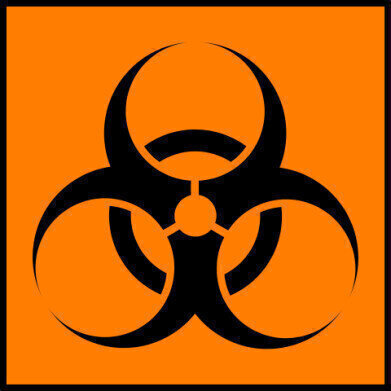Bioanalytical
Combating Zoonotic Diseases - Can Chromatography Help?
Sep 11 2015
After a long struggle, the current Ebola outbreak seems to be under control with the number of new cases reported declining. The Ebola outbreak is just the most recent example of a potential global pandemic that could alter life forever on our planet. We are overdue a pandemic, and epidemiologists discuss not if but when the next global pandemic will strike.
Many researchers believe that the next global pandemic will be zoonotic in origin. But what is a zoonotic disease, how can we stop them and what role is chromatography playing in the fight?
Such a cuddly little animal
A zoonotic disease is simply a disease that can be spread from animals to humans by a virus, bacteria or parasite. There are many different ways the disease can be transmitted to humans:
- Being bitten by an infected animal
- Contact with blood, saliva or faeces of an infected animal
- Eating or drinking infected animal products.
Many of the recent headline-making-disease stories have been based on zoonotic diseases such as:
- H5N1 — avian flu contracted from infected poultry
- vCJD — Variant Creutzfeldt-Jakob disease, linked to BSE in cattle
- Ebola — viral haemorrhagic fever, host not known but bats are suspected.
So who is to say that the next global pandemic will not be zoonotic? There is plenty of evidence to support the argument. But what are researchers doing to make sure that as a species humans are safe? Enter EEID.
Evolutionary Ecology of Infectious Diseases (EEID)
The World Health Organisation estimates that ‘About 75% of the new diseases that have affected humans over the past 10 years have been caused by pathogens originating from an animal or from products of animal origin.’ One of the risks as the world shrinks — due to an increasingly mobile population — is the rapid spread of a zoonotic or other infectious disease.
A research program — EEID — administered by the NSF in the USA and supported by the BBSRC in the UK are seeking answers to the question ‘Is our interaction with the environment somehow responsible for the increase in incidence of these diseases?’ The researchers are looking for the link between environmental changes attributed to humans and the occurrence and transmission of infectious diseases by considering the ecological and biological factors behind the changes and the disease.
What can we do?
One of the ways that we can gain a better understanding of infectious diseases is by looking at the structure of the infectious component — to see how they are built, which proteins and peptides are used. But the breakdown of proteins into peptide residues using enzymes can lead to large numbers of constituent components. Developments in chromatography, particularly UHPLC, now allow the high resolution separation of peptide residues as discussed in the article, Improvement in Speed and Reproducibility of Protein Digestion, and Peptide Quantitation Utilising Novel Sample Preparation Technology in a Full Solution Workflow, giving scientists an insight into a protein’s structure.
Will we be the architects of our own demise?
Image By Marcin "Sei" Juchniewicz [Public domain], via Wikimedia Commons
Digital Edition
Chromatography Today - Buyers' Guide 2022
October 2023
In This Edition Modern & Practical Applications - Accelerating ADC Development with Mass Spectrometry - Implementing High-Resolution Ion Mobility into Peptide Mapping Workflows Chromatogr...
View all digital editions
Events
Apr 28 2024 Montreal, Quebec, Canada
May 05 2024 Seville, Spain
May 15 2024 Birmingham, UK
May 19 2024 Brno, Czech Republic
May 21 2024 Lagos, Nigeria














